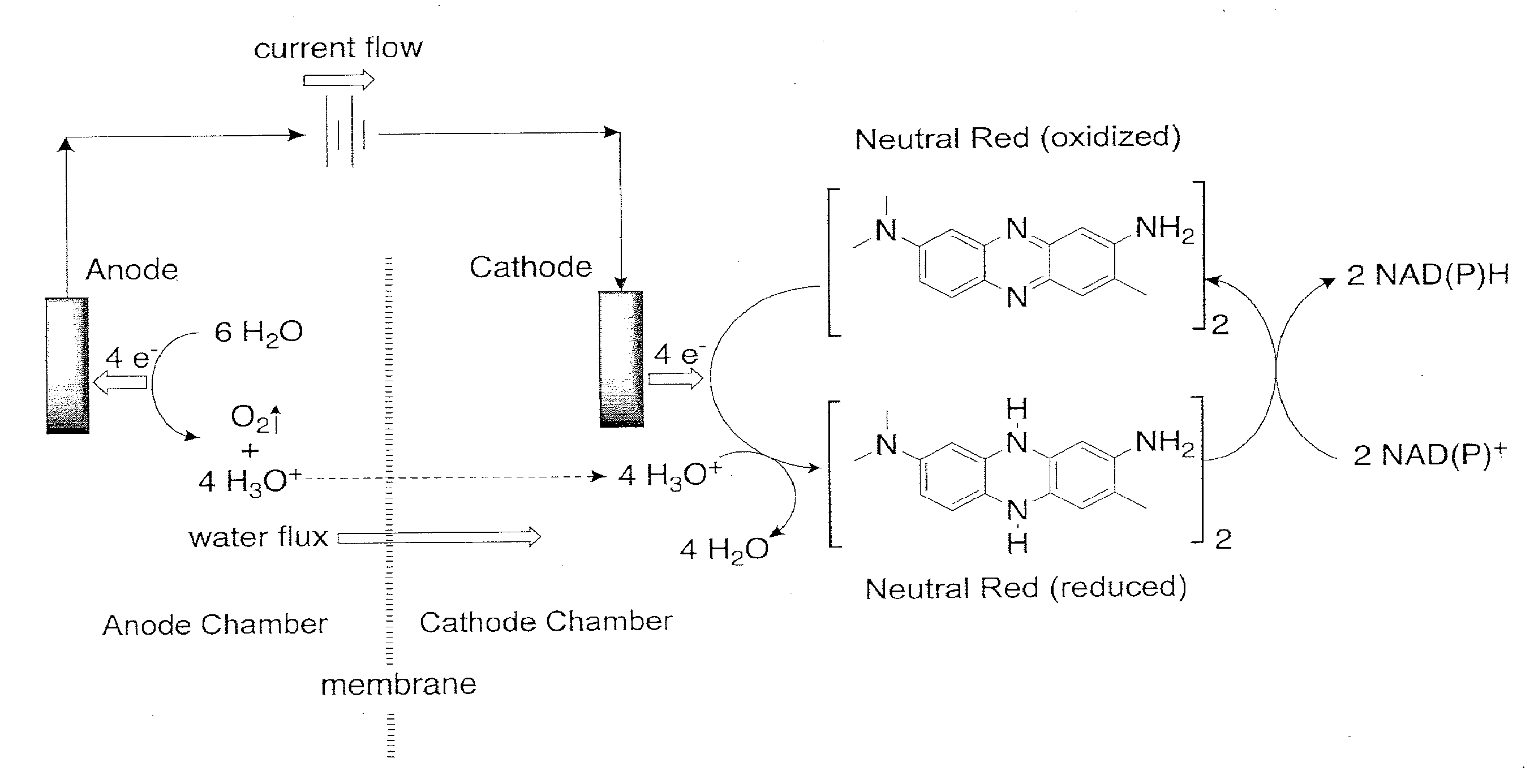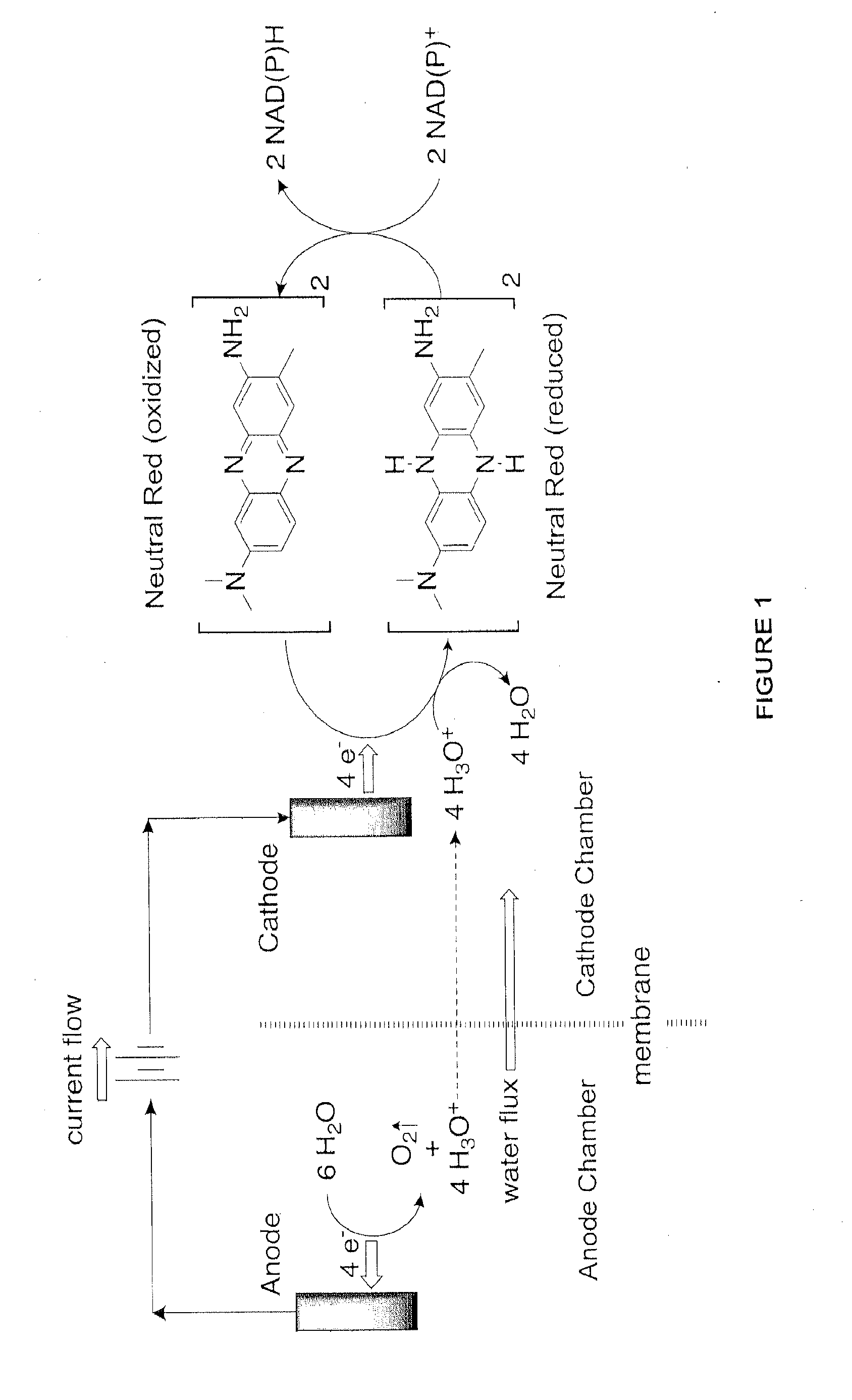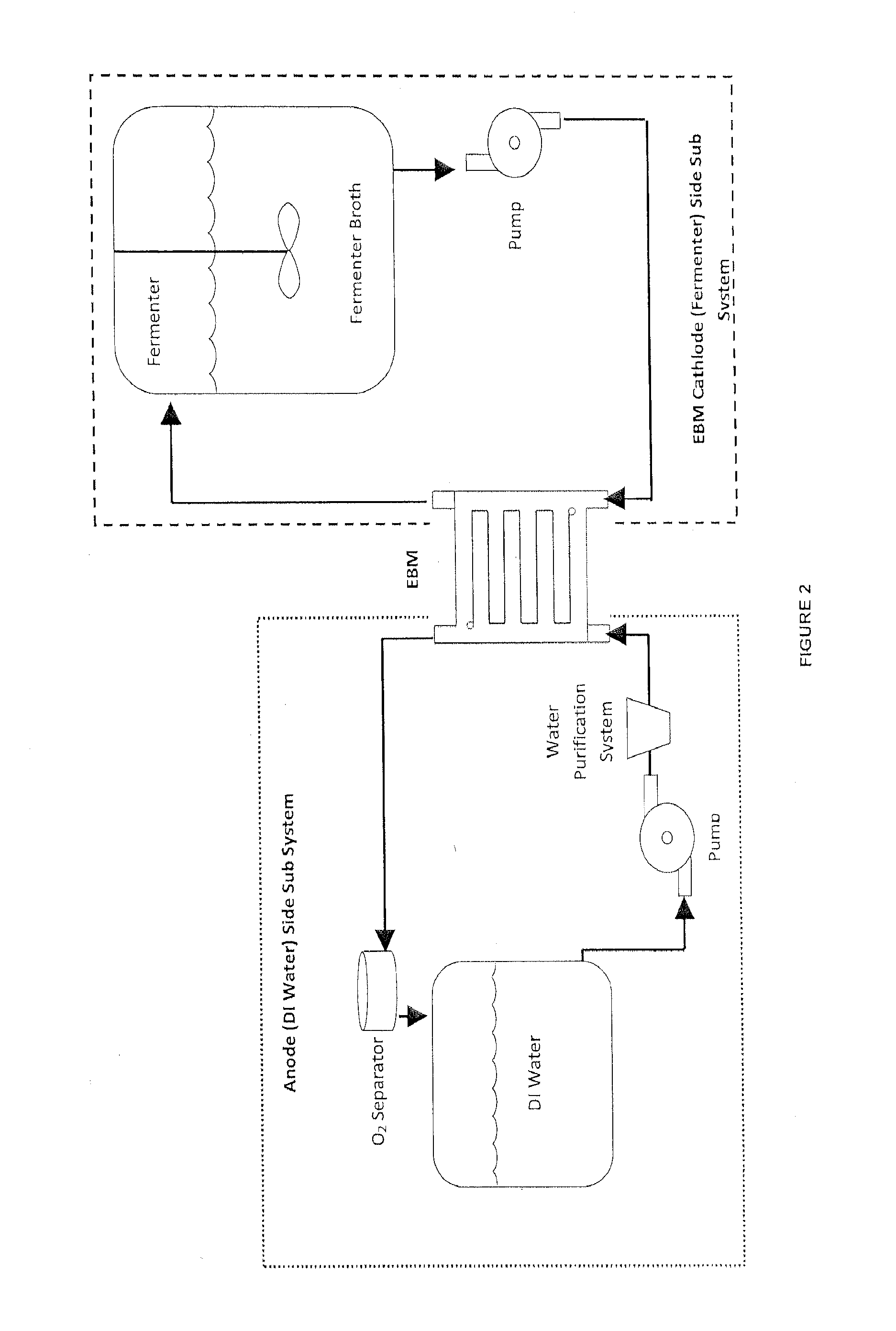Electrochemical bioreactor module and methods of using the same
a bioreactor module and electrochemical technology, applied in the field of biologically mediated reactions, can solve the problems of no cosub>2 /sub>being produced, no cosub>2 being produced, and no carbon atoms sacrificed by oxidation to cosub>2 /sub>being lost, etc., to achieve the effect of maximizing carbon efficiency and product formation
- Summary
- Abstract
- Description
- Claims
- Application Information
AI Technical Summary
Benefits of technology
Problems solved by technology
Method used
Image
Examples
examples
[0121]Reactions and fermentations can be performed according to the following illustrative, but not restrictive, examples.
example a
Succinic Acid Proof of Concept
[0122]Two 7-liter fermentation vessels containing actively growing E. coli strain AFP184, obtained from the United States Department of Agriculture (U.S. Pat. No. 6,743,610; and Nghiem et al., Appl Biochem Biotechnol (2010) 162:1915-1928), are prepared in the following manner. 5 Liters of growth medium are prepared containing the following (per liter of double-distilled water): 100 g glucose, 1.46 g K2HPO4, 0.62 g KH2PO4, 3.4 g (NH4)2SO4, 0.42 g MgSO4.7H2O, 15 g corn-steep liquor, 1 ml of antifoam A-204 (Sigma Aldrich) and 500 microM neutral red (Sigma Aldrich). One fermentor is used as a control, while the second fermentor was used for demonstrating the advantage of continuously recirculating the fermentor contents through the Electrochemical Bioreactor Module (EBM) (BioChemInsights, Inc., Malvern, Pa.).
[0123]The salts, corn-steep liquor and neutral red are combined and sterilized in the two 7-liter fermentors separately from the glucose. After sterili...
example b
Effect of Flow Rate on Electrolyzer Current
[0134]The ability of a given unit volume of fermentation broth to accept reducing equivalents from the cathode chamber of the EBM unit is limited by unit volume's ability to transfer those reducing equivalents to a metabolic process in the fermentation vessel. Thus, once the metabolic pools of reducing equivalents are filled, no more exogenously provided reducing equivalents (i.e. electrons and hydronium ions) can be transferred to the microbes in the fermentation vessel which results in a decrease in the current in the cathode chamber of the EBM unit. Conversely, if fermentation broth entering the cathode chamber is relatively depleted in reducing equivalents, then the current in the cathode chamber will increase as the EBM delivers reducing equivalents to the metabolic processes demanding more reducing equivalents. In this operating condition, increasing the flow rate causes more and more broth relatively depleted in reducing equivalents ...
PUM
 Login to View More
Login to View More Abstract
Description
Claims
Application Information
 Login to View More
Login to View More - R&D
- Intellectual Property
- Life Sciences
- Materials
- Tech Scout
- Unparalleled Data Quality
- Higher Quality Content
- 60% Fewer Hallucinations
Browse by: Latest US Patents, China's latest patents, Technical Efficacy Thesaurus, Application Domain, Technology Topic, Popular Technical Reports.
© 2025 PatSnap. All rights reserved.Legal|Privacy policy|Modern Slavery Act Transparency Statement|Sitemap|About US| Contact US: help@patsnap.com



